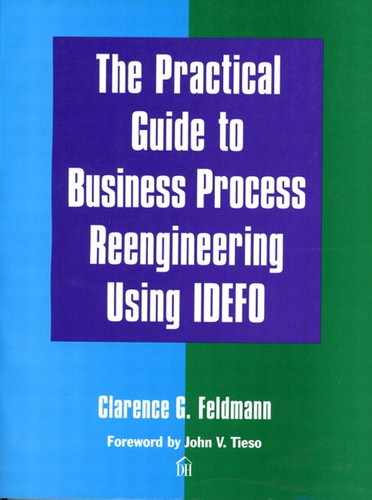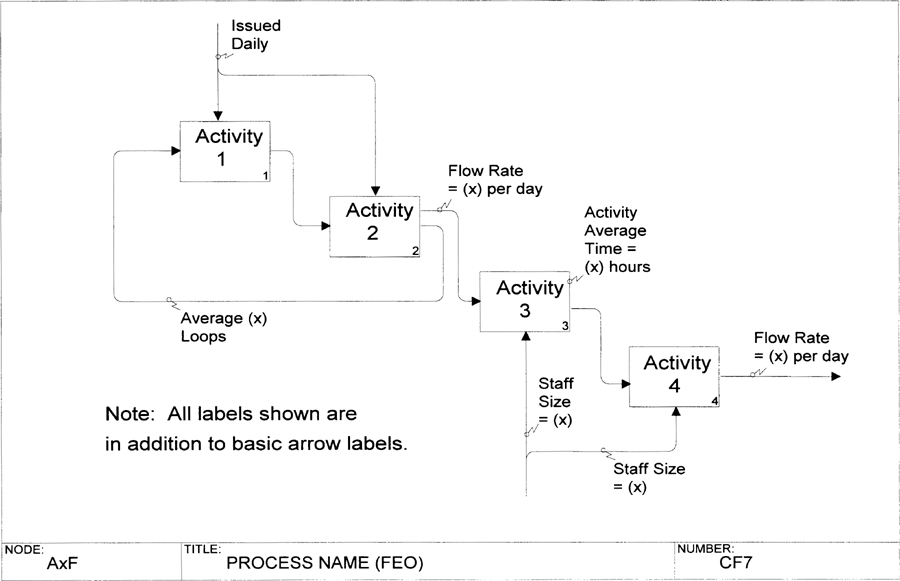Appendix C. SADT and IDEFO—A Historical Perspective
As mentioned in Chapter 1, Structured Analysis and Design Technique (SADT) is the original and highly rigorous structured analysis approach invented by Douglas T. Ross, then Chairman of SofTech, Inc. First used in the U.S. Air Force’s 1973 AFCAM Project, SADT is the archetype of system blue-printing methods, providing an engineering method for performing and managing requirements definition, functional analysis, and system design.
From its introduction as the architecture method proposed for use in the AFCAM program on computer-aided manufacturing, the structured analysis (SA) modeling language of SADT emphasized both activity and data parts, recognizing the need for definitive modeling of arbitrary subject matter. Toward the end of the ICAM program in 1978, most of the activity modeling of SA (but none of the data modeling) was extracted as IDEFO and was recommended for functional modeling of manufacturing and business processes. At the same time, the name IDEF1 was applied to a non-SA, entity-attribute-relationship-based information modeling scheme for data definition and database design. It later was supplanted by IDEF1X. IDEF2, for behavioral modeling, was not adequate to win a significant following, but IDEFO and IDEF1X have received the primary focus of the IDEFO User Group membership.
In 1991, the Department of Defense, in its effort to cut military spending, identified IDEFO as a golden nugget. Rather than continue to build new systems, the DoD emphasized business practices and analyzed site operations for potential cost savings and reuse of existing systems. The IDEFO process was successfully applied by the Army Corps of Engineers and, in early 1992, was adopted by the Corporate Information Management (CIM) Policy Committee as a standard.
Comparison of SADT with IDEFO
The IDEFO technique is a subset of SADT that was extracted and packaged by SofTech, Inc., at the behest of the ICAM Project Office, and then was adopted by the Air Force ManTech Office and others as the mandated method to be used in many procurements and projects. Fortunately, the syntax and semantics of IDEFO are identical to the equivalent portion of SADT. Therefore, there is no conflict between users of the two methods, and support tools exist for common features. In an effort to simplify elementary use of the method and improve its prospects for adoption, the Air Force required that many useful features of SADT be omitted from the IDEFO subset. Among the features excluded were
1. data modeling (properly dual to activity modeling)
2. two-way arrows and other syntax features
3. activation language and Q-labels (quantification)
4. rigorously derived model presentation forms (for example, schematics)
5. the tie process to rigorously relate models to each other and to other data and document forms
Let us look at just one of these: Q-labels provide the foundation for simulation in SADT models, since they quantify processing times, labor resources, and so on. Figure C-1 shows an example of an SADT diagram with Q-label quantification.
The figure shows activity 1 and activity 2 looping an average number of times, and then producing 2O1. Activity 3 requires an average time of (x) hours to process each 311, with a specified size of staff. Finally, the flow rate per day emerging from activity 4 is indicated, along with the number of staff required for the processing.
This type of quantification labeling is created as a for-exposition-only (FEO) diagram, with unnecessary labels omitted (for example, there are no controls shown on activities 3 and 4, since they are not necessary for the quantification analysis). It has been successfully used for high-level simulation on several military projects, including a Navy project to simulate shipboard fire control. In that project, the lowest-level SADT activities were actually programmed in Ada, and the resulting simulator was used to evaluate new Navy software.
The SADT features that were omitted when IDEFO was defined have caused analysts to turn to other methods to develop the information they need. Specifically, Q-labels are needed to perform cost and timing analysis. Activation rules are needed to simulate the model.
The concepts of data modeling in SADT have recently been related to object modeling concepts. An effort is under way to compare the use of SADT data modeling to object models. If this effort is successful, considerable cost and time could be saved by eliminating the need to rework SADT and IDEFO models for object-oriented software development, as is now envisioned.
Present users of IDEFO are pursuing the potential for revisiting these features of SADT. The forum for such efforts is provided by the ISEE (International Society for Enterprise Engineering) and by NIST (National Institute of Standards and Technology).

